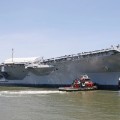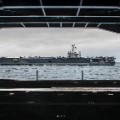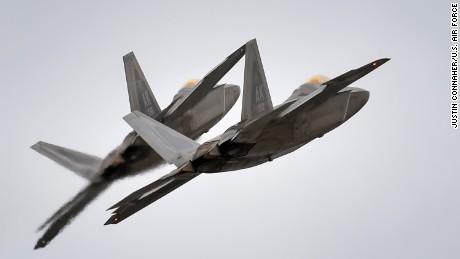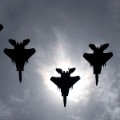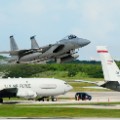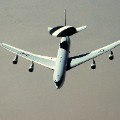Story highlights
- Top brass says usable planes are being pushed to the limit
- Mattis has outlined readiness, more personnel and recapitalization as priorities
(CNN)Nearly two-thirds of the US Navy's F/A 18 strike fighter jets are currently unable to fly, grounded due to repair delays or because they are awaiting spare parts.
With more than half of all Navy aircraft out of service and no budget agreement in place to increase defense spending levels, the top brass says its usable planes are being pushed to the limit.
"For a variety of reasons, our shipyards and aviation depots are struggling to get our ships and airplanes through maintenance periods on time," Vice Chief of Naval Operations Adm. William Moran told lawmakers on the House Armed Services Committee earlier this week.
The number of non-operational F/A 18 Hornets is "double where we should be," he said, confirming reports that 62% of the Navy's F/A 18s are unable to fly and 53% of the Navy's total air fleet is grounded.
Defense News first reported the amount of grounded Navy aircraft ahead of Tuesday's hearing.
Moran, joined by commanders from the Army and Air Force, described an aging, overworked and undermanned air fleet that is feeling the weight of sequestration and furlough budget cuts implemented by Congress and the Obama administration.
But Peter Singer, a strategist for the Washington-based New America Foundation, said that "the readiness problems are a culmination of a series of decisions to keep kicking the can down the road, from Congress's budget issues to the Pentagon assuming there would be a new replacement jet by now."
Democratic Rep. Adam Smith of Washington, however, cited budget caps implemented by Congress and President Barack Obama in 2011, coupled with the high demand for the fleet's services, as key factors contributing to the Navy's lack of fiscal flexibility.
"The budget caps imposed on military and nonmilitary spending in the Budget Control Act have degraded our military readiness," Smith, the ranking member on the House Armed Services Committee, told CNN, adding that those constraints have been "compounded by over a decade of war" and "long delays in the development of replacement aircraft."
Congress opted not to address restrictions resulting from the Budget Control Act this year, failing to produce a budget before the October 1 start of fiscal 2017. Instead, lawmakers chose to use stop-gap measures that kept defense spending at the 2016 levels.
One Republican House Armed Services Committee aide told CNN that simply blaming Congress for the military's degraded readiness is an over-simplification of the issue and that today's problems are a result of a "disconnect between the previous administration and Congress" over matching budget cuts for domestic and defense programs under sequestration.
Often described as the backbone of naval aviation, the F/A 18 was designed to have a lifespan of roughly 6,000 flight hours.
Today, jets are being stretched to fly between 8,000 and 9,000 hours to fulfill mission expectations as a result of fewer operational aircraft, budget restrictions and delays to the fifth-generation F-35 Joint Strike Fighter.
Moran warned that the shortage of flyable aircraft in an already aging fleet has left the Navy with "no depth on the bench" for future conflicts.
John Venable of the Heritage Foundation said the problems highlighted by Moran and other commanders illustrates the US military's "extraordinarily low levels of readiness" and that things could get worse before they get better.
Newly confirmed Secretary of Defense James Mattis has already outlined readiness, the increase of personnel numbers and recapitalization as some of the administration's top priorities.
But according to Smith, the Trump administration and Congress will be faced with major challenges when it comes to fulfilling campaign promises like building a 355-ship Navy or adding more planes to the Air Force.
"You can fantasize about spending as much money as you want, but the reality is we won't be able to fix our military readiness problems without repealing the Budget Control Act," Smith told CNN. "So far the Republicans haven't been able to show us any plan to do that."
























































